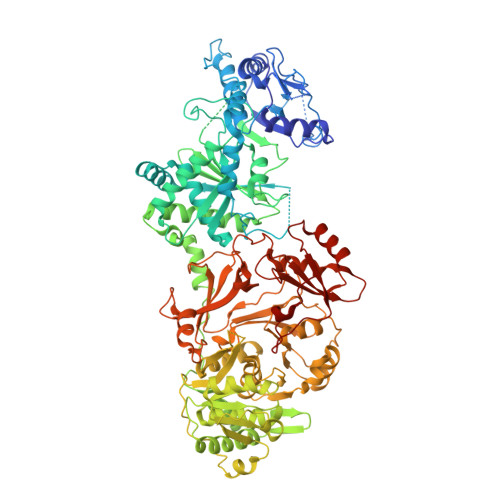Modular catalytic activity of nonribosomal peptide synthetases depends on the dynamic interaction between adenylation and condensation domains.
Peng, Y.J., Chen, Y., Zhou, C.Z., Miao, W., Jiang, Y.L., Zeng, X., Zhang, C.C.(2024) Structure 32: 440
- PubMed: 38340732
- DOI: https://doi.org/10.1016/j.str.2024.01.010
- Primary Citation of Related Structures:
8HLK, 8JBR - PubMed Abstract:
Nonribosomal peptide synthetases (NRPSs) are large multidomain enzymes for the synthesis of a variety of bioactive peptides in a modular and pipelined fashion. Here, we investigated how the condensation (C) domain and the adenylation (A) domain cooperate with each other for the efficient catalytic activity in microcystin NRPS modules. We solved two crystal structures of the microcystin NRPS modules, representing two different conformations in the NRPS catalytic cycle. Our data reveal that the dynamic interaction between the C and the A domains in these modules is mediated by the conserved "RXGR" motif, and this interaction is important for the adenylation activity. Furthermore, the "RXGR" motif-mediated dynamic interaction and its functional regulation are prevalent in different NRPSs modules possessing both the A and the C domains. This study provides new insights into the catalytic mechanism of NRPSs and their engineering strategy for synthetic peptides with different structures and properties.
- Key Laboratory of Algal Biology, Institute of Hydrobiology, Chinese Academy of Sciences, Wuhan, Hubei 430072, People's Republic of China; University of Chinese Academy of Sciences, Beijing 100049, People's Republic of China.
Organizational Affiliation:


















